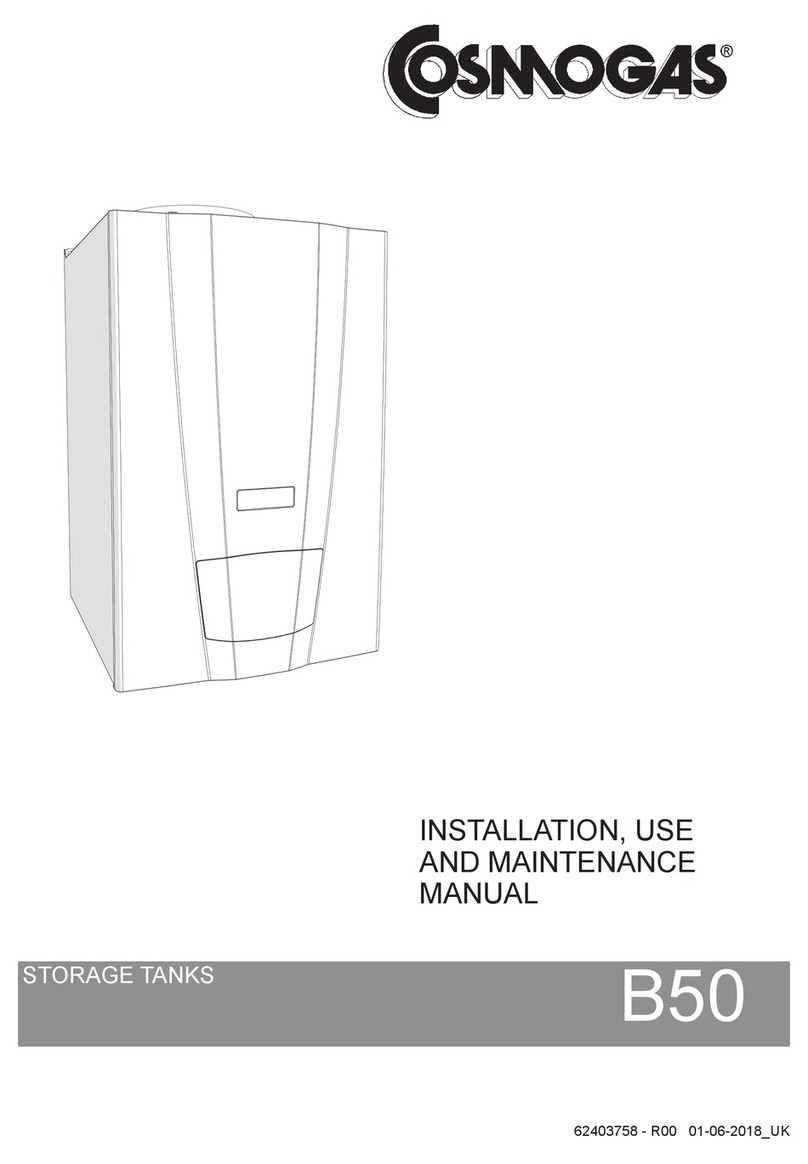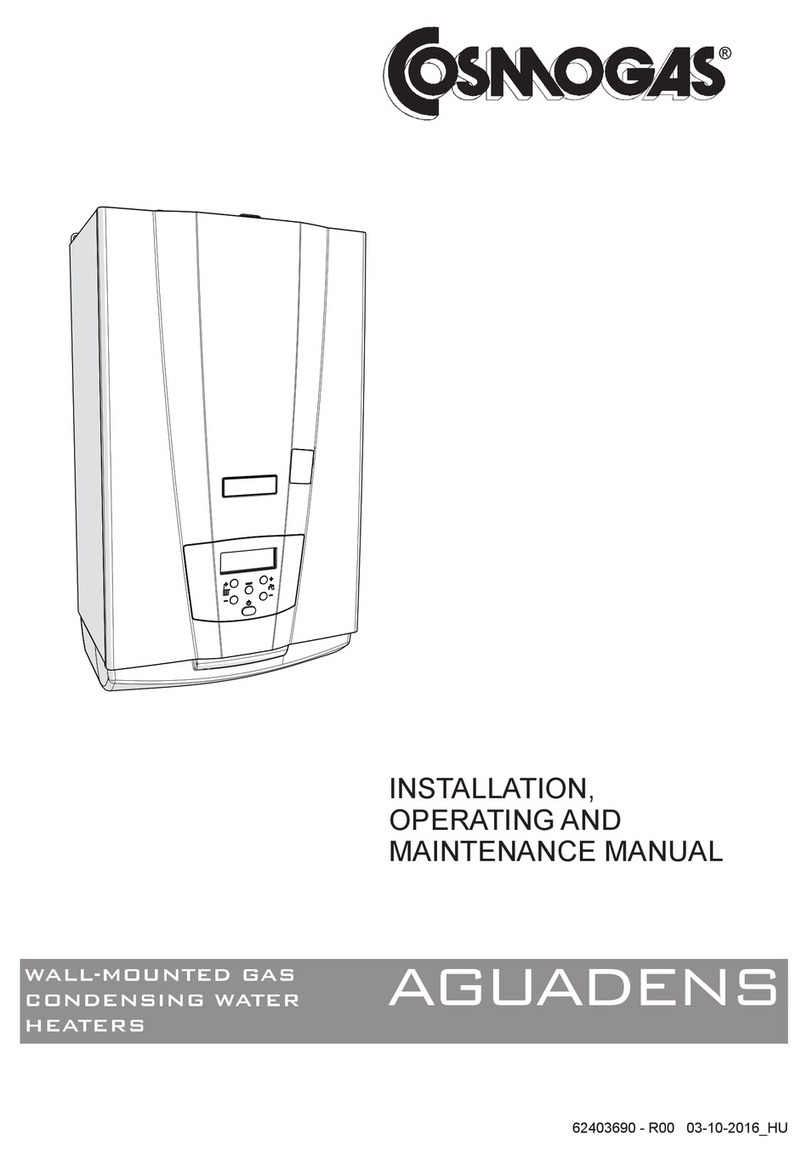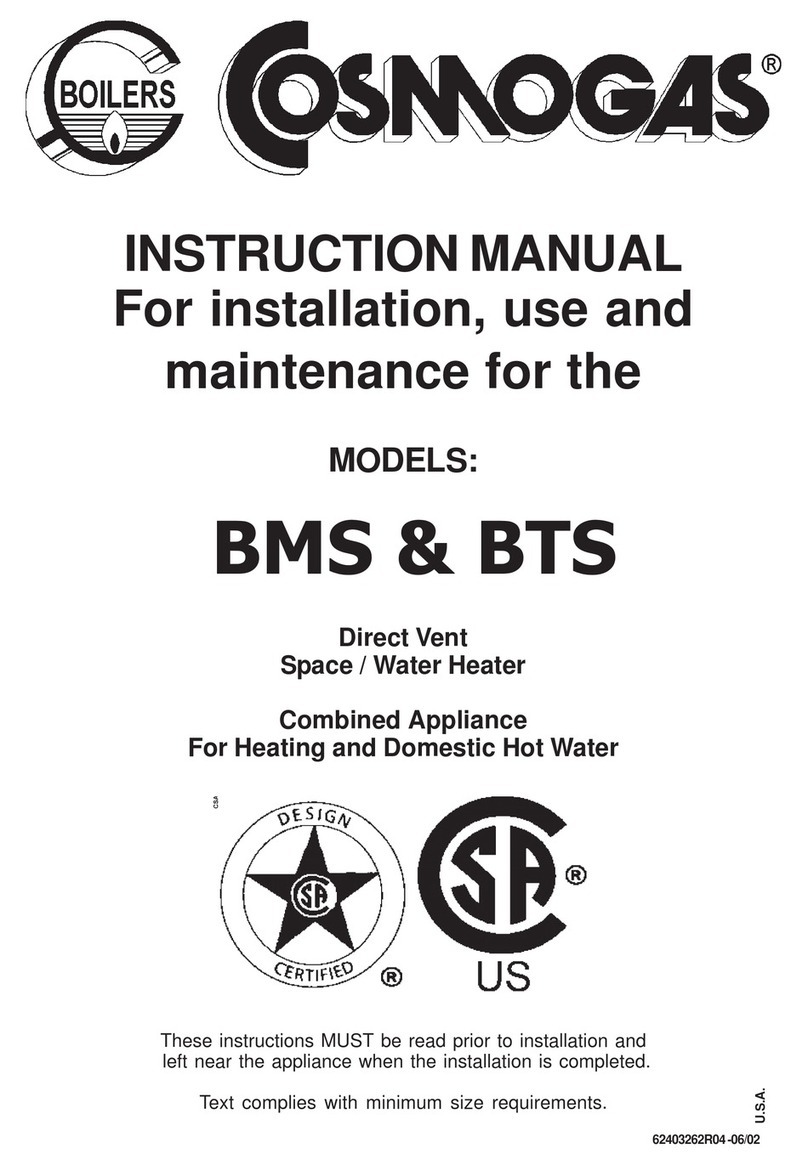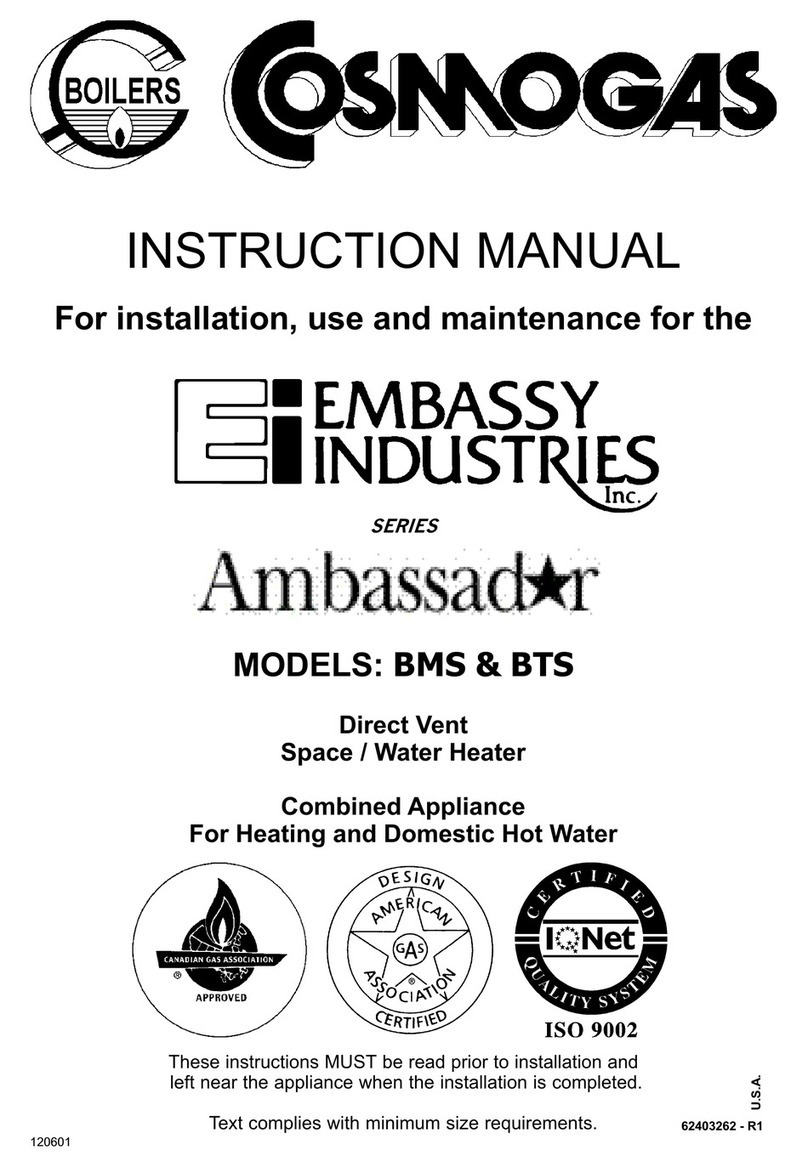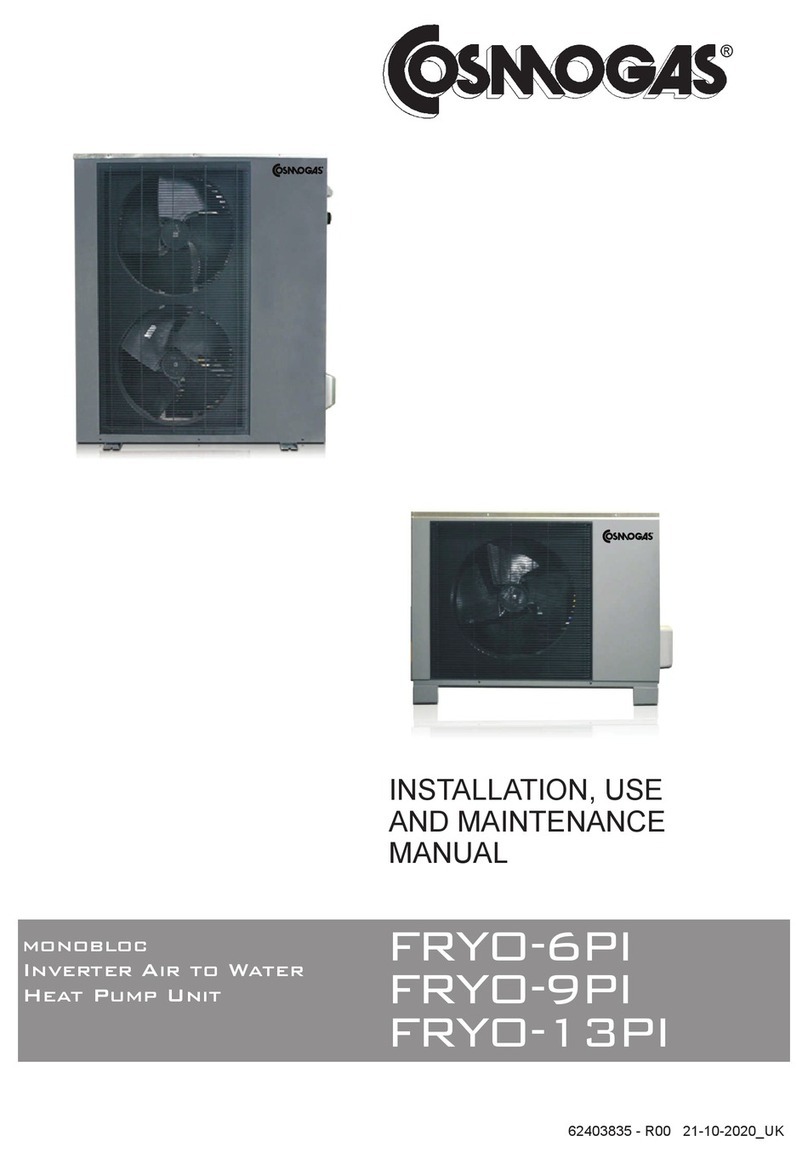
2COSMOGASAGUAPLUS
Explosive or highly flammable
products
Do not store or use explosive or highly
flammable materials such as paper,
solvents, paints, etc...in the same room
where the appliance is installed.
If you can smell combustion products
1. - Switch the appliance o.
2. - Ventilate the room.
3. - Call a professionally qualified
technician.
Qualied installer: qualied installer
is an individual with specic, technical
training in space heating systems,
domestic hot water systems, fuel
gas systems and electrical systems.
This individual must have the legally
required qualications.
Installation and Modications: Only
a Qualied installer must carry out
the installation and calibration of the
heater. Never modify the heater or its
ue gas carrying components in any
way. This heater must be properly
vented.
Flue gas/air intake:
- You are only permitted to operate
this appliance with the combustion
air/ue gas system that has been
specically designed and approved.
- Do not obstruct the air intake or vent
pipe terminals.
- If heater installation is provided as
replacement heater, DO NOT connect
new heater venting to an existing
vent system, if it is shared with other
appliances.
- Do not restrict or seal any air intake or
outlet openings (terminals).
Hazards and Your Safety - Hot Water Can
Scald! Water temperature over 125°F
(52°C) can cause severe burns instantly,
or death from scalds. Children, the
disabled, and the elderly are at highest
risk of being scalded; see instruction
manual before setting temperature at
heater! Feel water before bathing or
showering.
Installer: Read all instructions,
including this manual, before
installing. Perform steps in the order
given.
User: This manual is for use only by
a qualied heating installer. Refer to
the User’s Information section for
your reference.
Maintenance: at least once a year the
user must call a Qualied installer for
routine maintenance.
If you smell gas
1. - Close the gas valve.
2. - Ventilate the room.
3. - Do not switch on any electric device,
telephone included.
4. - From another room, call a
professionally qualied technician
immediately or the gas supply
company. Call the Fire Service if the
former are not available.
Carbon Monoxide.
Every year deaths and serious
injuries occur due to carbon monoxide
poisoning. This tragedies are avoidable
if certain preventative measures such
as the following are undertaken:
Ensure that all boilers, water heaters,
room heaters, stoves and hobs
which burn oil, natural gas, LP gas,
coal, peat, wood and wood pallets
are serviced regularly. Servicing is
needed at least once per year to
ensure safety. the service person
should be qualified and trained
to service the specific types of
appliance
If an appliance is tted in a dwelling,
then a carbon monoxide detector
should always be tted. There are
two types available: a simple detector
works like a re alarm to emit a loud
noise and flashing light if carbon
monoxide is detected or a more
sophisticated version which will also
switch o the appliance to provide
more safety.
Defects: If you nd any defects, you
must inform the owner of the system
of the defect and the associated
hazard in writing.
When servicing heater, to avoid
electric shock, disconnect
electrical supply before performing
maintenance.
When servicing heater, to avoid
severe burns, allow heater to cool
before performing maintenance.
Label all wires prior to disconnection
when servicing controls. Wiring
errors can cause improper and
dangerous operation. Verify proper
operation after servicing.
Correct Use:
This heater must only be used for
the purpose for which it has been
expressly designed: Heating of water
for closed circuit systems for central
heating.
Do not use this appliance if any part
has been under water. Immediately
call a licensed authorized technician
to inspect the appliance and to
replace any part of the control system
and any gas control, which has been
under water.
Ensure the heater and its controls are
protected from dripping or spraying
water during normal operation or
service.
Only use the heater in the combinations
and with the accessories and spares
listed in this manual.
For safety and environmental
reasons, the packing materials
must be properly disposed of. Any
replaced part or packaging should
never be left within the reach of
children.
SAFETY INSTRUCTIONS
WARNING!!! FAILURE TO COMPLY WITH THESE PROVISIONS AND REQUIREMENTS MAY
COMPROMISE THE SAFETY OF THE UNIT AND CAN RESULT IN A FIRE OR EXPLOSION CAUSING
PROPERTY DAMAGE, PERSONAL INJURY, OR DEATH.


















